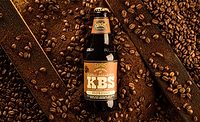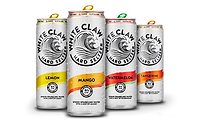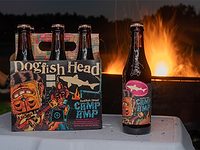2020 Craft Beer Report:Craft beer focus shifts during COVID-19
Craft beer volume down 8%

"Highway to the Danger Zone,” the hit theme song for 1986’s “Top Gun,” plays in the background of jets revving up their engines as they take the “highway to the danger zone, ride into the danger zone.” Since the COVID-19 pandemic hit in March, independent craft brewers have been experiencing their own “danger zone” as on-premise traffic to taprooms and brewpubs declined and volume dropped an estimated 8 percent in the total U.S. independent craft beer market, says Nathan Greene, consulting analyst for New York-based Beverage Marketing Corporation (BMC).
The independent craft beer market was worth an estimated $29.3 billion in retail spending in 2019, with about 50 percent of spending occurring on-premise, Greene says. For the first half of 2020, craft beer market production volume was down around 10 percent, with improvement in the third quarter, followed by the aforementioned 8 percent year-to-date decline through August.
“[It’s a] fair assumption that on-premise will represent 75 percent of this decline, which extrapolates to annual projected loss of an estimated $879 million in on-premise craft beer sales,” Greene says. “The total U.S beer market shipment volume has declined an estimated 2.5 percent through the end of August year-to-date compared to a year ago.”
Yet, even before the pandemic hit, last fall going into winter, regular beer was down around 1.6 percent while craft beer was up 3.1 percent, notes Bart Watson, chief economist for the Boulder, Colo.-based Brewers Association (BA).
Despite the financial uncertainty, craft entrepreneurs still are entering the industry. As of June 30, 2019, the BA reported that there were 7,480 Independent craft brewers in the United States, which was up from 6,464 craft breweries in 2018. Seven months past the start of the pandemic, the brewery numbers are still growing, albeit a little more slowly, Watson says.
“We’re currently at a little over 8,400 small and independent craft breweries and over 8,500 breweries in the country,” Watson says. “Right now is a challenging time for small breweries, so I think that going forward, we might see the number rise rapidly again. The overall beer market has held relatively steady even with the shift in channel away from bars and restaurants and toward grocery stores.
“Small brewers have been less able to weather that shift, and many of them have pivoted and updated their business model, like selling directly at their brewery is just a much bigger part of their business model for small brewers,” he continues. “We measure figure sales by volume down for small brewers [at] about 10 percent and revenue is likely down 1 percent.”
BMC’s Managing Partner Brian Sudano also notes the impact the pandemic has had on the craft beer market. “With temporary closures of on-premise businesses in many geographies for several months along with a slow rebuild of volume, which is still 35 percent below last year according to Nielsen, we project overall craft production to be down around 6 percent in 2020.”
As a result, craft breweries have suffered. Founded in 1986, Harpoon Brewery, a brand of Mass Bay Brewing Co. (MBBC), immediately lost 35 percent of its production volume for its on-premise operations when coronavirus hit the East Coast, says Dan Kenary, Harpoon’s co-founder and chief executive officer (CEO).
Yet, the off-premise shift for MBBC and its five brands — Harpoon, Arctic Chill, UFO, City Roots and Clown Shoes — resulted in a steady increase in demand, Kenary says.
“[P]roduction for September 2020 was on-par with September 2019. In addition, the launch of exciting collaborations such as the new Harpoon Dunkin’ products have also helped us to keep production volume leveled,” the CEO says.
Shifting consumer behavior
Due to shifting consumer behavior, social distancing and a heightened concern about a second wave of the virus hitting this fall, 53 percent of Americans plan to continue cooking and eating more at home, the Toluna Barometer states. Additionally, 29 percent of the 1,082 respondents surveyed are worried about returning to their local restaurants, compared with the 57 percent of people who dined out every one to three weeks pre-pandemic.
“What we're seeing is not an overall huge change in the beer market in terms of volume, but again, a shift where people are drinking less beer in bars and restaurants and they're drinking more beer at home, bought at package stores,” BA’s Watson says. “So while there are reports that Americans are drinking more beer, that's mostly because people are only looking at the package stores, and missing the bar and restaurant piece.”
Through August, BMC’s Greene reports year-to-date volume decline/growth August as:
- Total beer, down 2.5 percent, projected year-end, down 2.7 percent
- Craft beer, down 8 percent, projected year-end, down 6 percent
- Flavored malt beverages (FMBs), plus 80 percent, projected year-end, plus 68 percent
Yet, when it comes to dollar sales, Chicago-based Information Resources Inc. (IRI) data reports that the total beer category generated $41.5 billion in dollar sales, a 13.5 percent year-over-year (YOY) increase in multi-outlets and convenience stores for the 52 weeks ending Sept. 6.
Total domestic beer had sales of $26.6 billion, a 5.9 percent YOY increase; imported beer generated sales of $8.1 billion, an 11.1 percent rise; craft beer saw sales of $4.7 billion, a 10.7 percent YOY increase; and FMBs had sales of $6 billion, a 73.6 percent acceleration over the prior-year period.
By the end of 2020, however, the downturn from the pandemic could result in brewery-related job losses of 651,000 and a $22 billion drop in retail beer sales, according to a report released by the Beer Institute, the Brewers Association, the National Beer Wholesalers Association and the American Beverage Licensee, citing research from John Dunham and Associates.
“Although millions of Americans continue to enjoy beer responsibly every day, because of the COVID-19 pandemic, the beer industry has seen a dramatic decline both in sales and jobs that rely on our nation’s most popular alcohol beverage,” said Jim McGreevy, president and CEO of the Beer Institute, in a statement. “We hope policymakers consider that our nation’s brewers and beer importers are having to make difficult decisions to adjust for the impact of the COVID-19 pandemic. Members of Congress should pass legislation to ensure our nation’s beer industry does not face a $154 million annual tax increase next year, and state legislatures should not raise taxes on the beer industry to resolve budget shortfalls.”
BA’s Watson agrees: “We think we're in a good position, this is one of the most supported, bipartisan bills in Congress and we have about three-fourths of the Senate supporting this bill. … I think we're well-positioned to help some of these businesses, and make some of these tax cuts go longer, or be made permanent.”
Seltzers star of the show
Even before the pandemic hit, overall beer sales had decelerated and craft brewers were exploring the beyond-beer market with FMBs like hard seltzers, hard coffees, hard sodas and kombuchas driving sales.
When it comes to these trending sub-categories, Randy Ornstein, director of alcohol at Philadelphia-based goPuff, notes the emergence of craft brewers launching beyond-beer products as their first SKUs, rather than the traditional craft brewers making IPAs and ales.
“Craft hard seltzers continue to drive the most growth for goPuff within the hard/spiked beverage class,” Ornstein says. “We believe kombuchas and craft teas will see significant growth as we expand these offerings, but not at the same level as seltzers. We are not as bullish on hard coffees and hard sodas due to higher sugar content, and we are also seeing a slowdown in our cider and traditional FMB business as consumers gravitate to hard seltzers.”
Although the beer category remains a reliable go-to for consumers, handling 18.5 percent of orders in September, sales of beyond beer offerings like hard seltzers are stealing share, states Liz Paquette, head of consumer insights at Boston-based Drizly.
“Currently, our reporting includes hard seltzer in the beer category and to date this year it makes up about 21 percent of share in the beer category, compared to 13 percent last year,” Paquette explains. “Beyond consumer shift to ‘healthier’ alternatives to beer, with less carbs, calories, etc., we know convenience and portability are increasingly important, which we’ve seen play out in ready-to-drink (RTD) beverages.”
From Labor Day weekend 2019 to 2020, hard seltzer’s overall sales grew 395 percent, while IPAs grew 23 percent in share, suggesting that the traditional, craft beer style’s position is strong despite growth in alternative categories, Paquette adds.
Reinvention the mother of necessity
Craft brewers that have been able to invest in new platforms and modes of selling, such as beer to-go in growlers and crowlers, and those delivering beer themselves or through third-party delivery services are creating new growth streams, BA’s Watson says.
Watson notes that brewers should passionately continue to tell their story while stressing the safety of their environment. “I think breweries are well-positioned for this because if you ask a brewer what they do, they'll say 80-90 percent of breweries is cleaning,” he explains. “So, brewers already have really good standards for keeping their spaces clean because clean beer is good beer.”
To drive growth, brewers can work with companies like Brooklyn, N.Y.-based TapRm to create immersive brand experiences and increase in-home sampling via single-can purchases that mirror the experiences in brick-and-mortar taprooms, says Hannah Heath, creative lead at TapRm.
“We firmly believe that putting brands on the virtual shelf is not the end-goal of an eCommerce platform in this space, it’s simply a necessary step toward our real purpose — supercharging the growth of brands,” Heath says. “We work with partner brands such as Loverboy [sparkling hard teas and craft cocktails] to create immersive brand experiences on the TapRm site itself. Producers, both craft and mainstream, are seeking new avenues to engage with consumers during a period of such dramatic change.”
TapRm has experienced major growth in hard kombucha and tea brands, which accounted for 17 percent of its sales since January, and now is working with more than 70 partner brands, Heath adds.
Many craft brewers, if they hadn’t done so before, are embracing new online ordering systems, eCommerce and at-home delivery, BMC’s Greene says.
He notes that pre-COVID, around 10-15 percent of independent craft beer volume went through direct sales, which includes eCommerce and at brewery take-home sales. “Pending greater data clarity, this will likely grow to about 20 percent by the end of 2020,” Greene says.
MBBC’s point-of-sale (POS) software solution Toast has enabled the craft brewer to implement online ordering for curbside pick-up for food and beer, while the Open Table reservation system is helping the brewery manage its modified space and capture guest information in case contact tracing is necessary.
MBBC also has transitioned its tastings and many of its brand activation events, such as the Harpoon 5 Miler, Flannel 5K and Dogtoberfest, to a virtual format, preserving a revenue stream for the brewery and its nonprofit beneficiaries.
“Scheduled Virtual Tastings are available, which includes the shipment of an assortment of our current beer offerings direct to Massachusetts’ consumers, a Harpoon tasting glass, an hour of curated beer tastings, and a brewery tour with one of our Beer Captains,” Kenary says. “We’ve had different specials and offerings each week and are capitalizing on ticketed events with unique attention-grabbing angles, such as beer and Dunkin’ doughnut pairings, an upcoming Pumpkin Carving event and specialty beer flights.
“We have new and expanded food offerings, highlighted by a new product for us in the Beer Hall, the Seaport Square pizza, which has quickly become known among local food bloggers and influencers,” he continues. “We also offer online shopping deals and local collaborations on food and beer releases.”
The shifting focus of craft beer
Bart Watson, chief economist for the Brewers Association, talks about how the craft beer industry is doing during COVID-19 and how these entrepreneurs are reinventing their businesses.
Click here for more podcasts from Beverage Industry
Engaging consumers, creating new products and new modes of selling and educating consumers about a beer — whether on-premise or virtually — is crucial during a very unique year, BA’s Watson says.
“In surveys we've done, 30-40 percent of people said they wouldn't come back to on-premise until the public health crisis got better or there's a vaccine,” Watson says. “There's only so much businesses can do. Craft brewers are doing great things to innovate, to pivot their business model, to show that they're still safe spaces, but they're going to need additional help, and I think that needs to come from a combination of government and customers.
“To the craft beer fans out there, this is a great time to support your local small businesses. They've given to their community, and now if you want them to be there, it's a great time to visit them, to buy some merchandise, and show that you support them, because it's going to be a challenging few months,” he continues. “Breweries who aren’t able to get back the foot traffic aren’t at fault. If you want a brewery to stay in business, buy beer from them. It's going to take the whole community banding together to keep these breweries in business through this winter.”
Looking for a reprint of this article?
From high-res PDFs to custom plaques, order your copy today!






